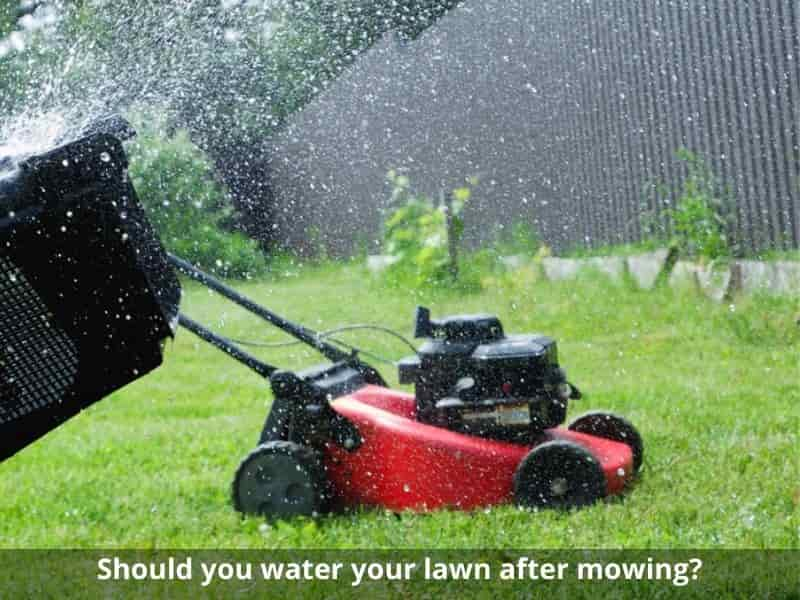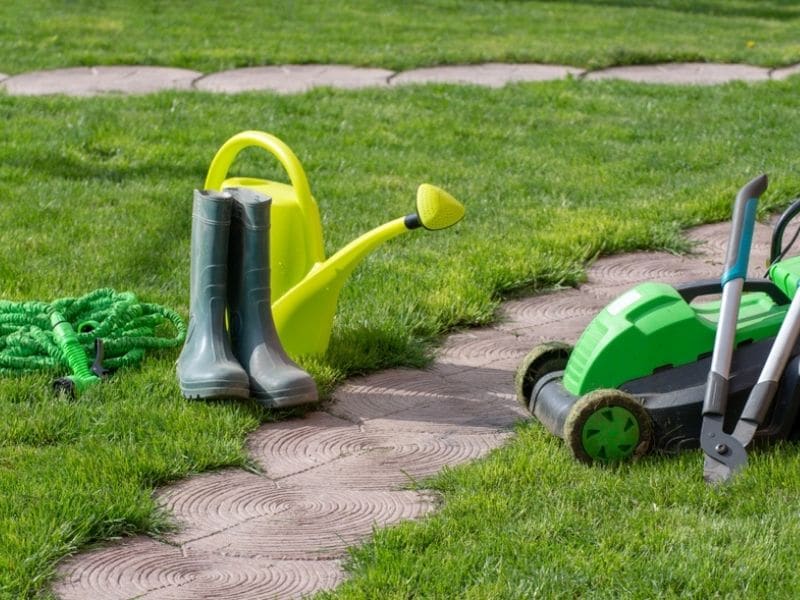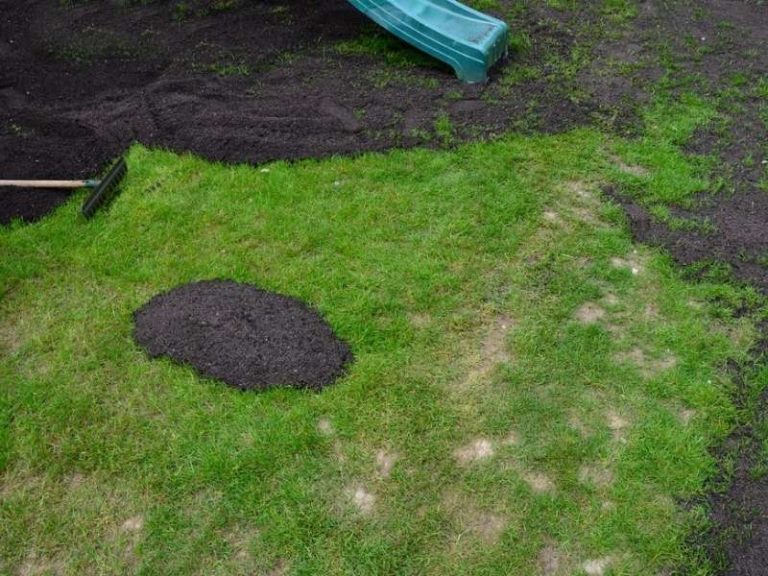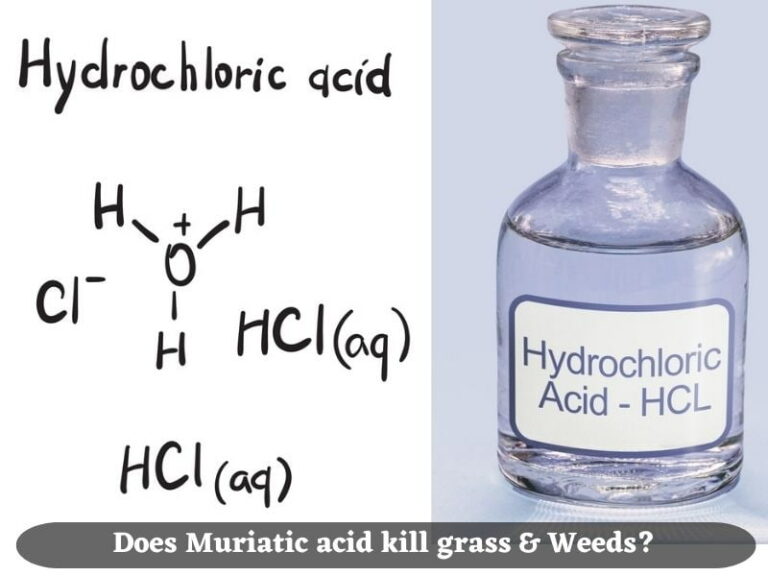Should You Water Grass After Mowing?
When done correctly, mowing and watering are maintenance practices that produce a healthy lawn. However, watering turf can be the most challenging task, as doing it at the wrong time can result in turf injury. While mowing, you want to cut the grass evenly with less effort. Watering a lawn significantly influences when to cut grass, and if both coincide, you must decide whether to water the turf first and mow afterward or vice versa.
You should water lawns after mowing if the grass is thirsty. Carry out the moisture content through observation, screwdriver tests, or footprint methods. However, watering already moist grass is unnecessary since it can leave a soggy lawn prone to fungal diseases and other lawn problems.
Should you water your lawn after mowing?
Water your lawn after mowing only if the grass needs it. Irrigating the lawn after mowing is unnecessary if the grass has enough moisture.

An excellent method to determine if your grass needs water after mowing is by observing your footprints on the lawn. Walk over the grass and watch out for these marks. If there are visible footprints, the grass is dry and needs water. In that case, turn on your sprinkler and water the lawn. But if no footprint marks are left, the grass is still wet and therefore doesn’t need water. In that case, don’t water the lawn; leave it for a day or two before watering it again.
Another method to check if your grass needs water is the screwdriver test. Here, you dip a long screwdriver into the lawn soil, feel how it penetrates the soil, and see if it has dump soil marks on its side. If you drive the screw 6 inches into the soil and it penetrates easily and comes out dumpy with some soil on its side, it means the soil still has moisture and doesn’t need watering. But, if the screwdriver seems difficult to penetrate the soil and comes out dry with no soil marks, it means the soil is dry and needs watering.
Dry soils are more compact and don’t allow objects to penetrate through them easily. Turn on your sprinkler and treat the lawn with deep watering to six inches. It takes an inch of water to ultimately water a lawn. Clay soil needs less water than sandy soil.
Checking for a lighter green color than usual means your turf needs more water. But don’t wait for the grass to turn yellow or curl its blades so you can water it. It’s essential to note the most conducive time to water a lawn so the grass can effectively use it.
Watering Tips After Mowing
- If your lawn needs water after mowing, the best time to water it is early morning, before 10 am. The temperature is cool enough at sunrise; thus, there is a low rate of water evaporation from the soil. Watering in the morning also gives the ground enough time to absorb the moisture before the daytime heat evaporates it. The grass also gets enough time to dry up after watering before nightfall.
- Watering during hot daytime temperatures above 75oF is not advisable. This is because the rate of evaporation is high, and the water will quickly evaporate before the soil and grass absorbs it for use.
- The worst time to water your lawn, and you should never, is late evening or at night. Freshly cut grasses are more susceptible to diseases and fungal infections. Watering at night when there is darkness will leave the grass wet throughout the night. Moist conditions and darkness create a conducive environment that encourages the growth of molds, mildew, and invasion of fungal infections. Since cut grass is more vulnerable to fungal diseases, watering at night after mowing can cause these diseases to the turf.
How soon after mowing should I water the lawn?
The best time to water a lawn after mowing will depend on when you mowed it. After mowing, irrigate the lawn if it needs water to help it recover from the mowing stress. However, timely watering is critical.

If you mow your lawn early in the morning, before 10 am when the temperature is below 75oF, you can water the lawn immediately if the grass needs more moisture. As earlier said, morning is the perfect time to water a lawn before the hot daytime temperatures hit.
Watering in the morning provides a cooler temperature with less or no evaporation, and the soil gets enough time to absorb the water deeply before it evaporates. Irrigating the lawn in the morning also gives the turf enough time to absorb the water and dry out before nightfall, making it less susceptible to fungal infections and diseases.
If you mowed your lawn at night, you could wait till the following morning so you can water it. Don’t water the lawn immediately at night after mowing because the turf will remain wet throughout. Moist turf and darkness create a conducive environment for fungal infections, molds, mildew, and moths invasion.
If you mowed the grass during the day, wait till the next morning to irrigate the lawn. Watering during the day isn’t recommended because higher daytime temperatures increase the rate of water evaporation. The water will quickly evaporate into the atmosphere before the soil can absorb it deeply so that the grass can use it.
The general rule here is, don’t water the lawn during the day when the temperatures are above 75oF, in the late evening, and at night. The best time to water your lawn is in the morning before 10 am when the temperature is below 75oF.
When to water grass before mowing
Irrigate the grass in the morning a day before mowing the lawn. If rainfall occurred before you mowed your lawn the previous day, wait for the turf to dry up first before cutting it.
Water the lawn in the morning a day before mowing to give the grass enough time to absorb and utilize the water. Morning is also conducive as the evaporation rate is still low, and the grass gets enough time to dry up before mowing. Watering before mowing relieves the grass of any temperature stresses present.
Previous night rainfall before mowing doesn’t need you to water the lawn again, but you have to wait for the turf to dry up before you mow it. Cutting wet grass is not recommended because wet grass produces an unevenly cut lawn. The damp turf blades also stick together to form clumps that clog on the mower’s deck, making mowing difficult.
Wet grasses are slippery and can cause injuries. Lastly, mowing a soggy lawn can easily transmit fungal infections from one part of the lawn to the other.
Is it good to water grass after mowing?
Yes, you can water grass after mowing if it has moisture-deprived symptoms. You can watch out for lighter green colors, walk and observe your footprint, and drive a screwdriver to the soil to determine the soil moisture content. Carrying out these tests ensures you only water your grass when needed, even after cutting grass. Always water your lawn is thirsty, and moisture levels are down.
Should I water my lawn before mowing?
No, you should never water your lawn before mowing it. Avoid mowing immediately after it rains since it can lead to lawn problems like fungal diseases and infections, sloppy lawns, and unevenly cut grass. In addition, it can cause injury to you by falling, electrocution, or even clogging up the mower’s lower deck, making pushing the lawnmower hard and challenging.
How do you determine if the lawn needs watering?
You can determine if your lawn needs watering in the following ways:
1. Observe your footprints-Walk over the grass and watch out for footprint marks. Visible footprints mean the grass is dry and needs water, while no footprint means the grass is still wet and therefore doesn’t need water.
2. The screwdriver test– dip a 6 inches screwdriver into the lawn soil. If it penetrates easily and comes out dumpy, the soil still has moisture and doesn’t need watering. But, if it penetrates and comes out dry with no soil marks, it is dry and needs watering.
3. Check for a lighter green color – look out for a light green color than usual means your turf needs more water. However, water before the grass turns yellow or curls its blades.
How long does it take for grass to recover after mowing?
Turf takes approximately 24 hours to recover after being cut. Grass concentrates most of its effort after mowing in producing new blades, tillers, and buds to continue with its essential processes like photosynthesis and respiration. The recovery period gives the base of the leaf blades enough time to expand and grow again. Also, new grass shoots start regrowing to make food and reproduce.
Keeping off the lawn after mowing is advisable to give it enough time to recover first.
Sources and References
- Richard L. Duble, Turfgrass Specialist Texas Cooperative Extension: Mowing Practices.
- University of Maryland Extension: Watering Lawns.



